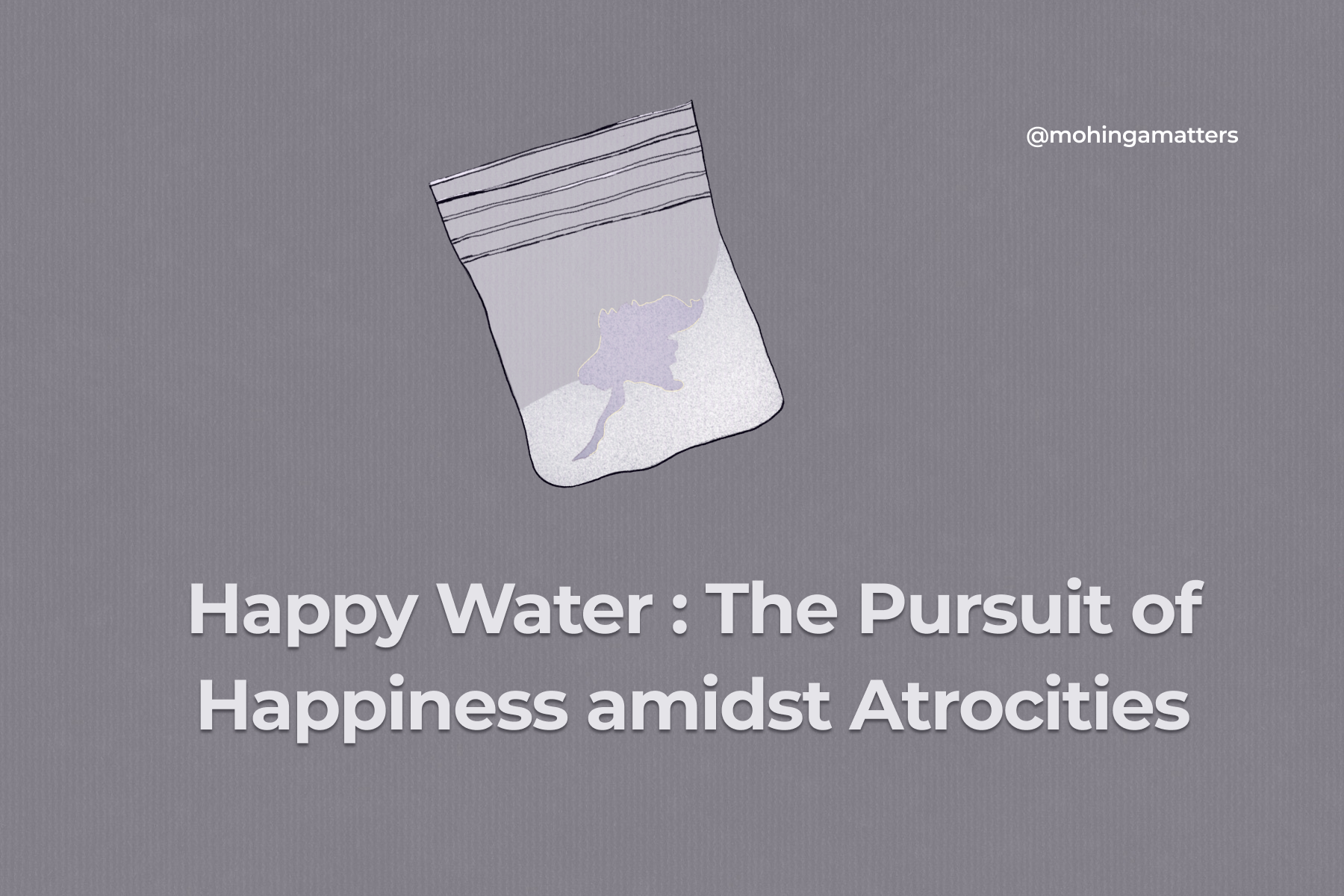
Happy Water: The Pursuit of Happiness amidst Atrocities
In December 2022, the United Nations Office on Drugs and Crimes (UNODC) published an update on the global trend of drug use, and Myanmar was mentioned as one of the three Southeast Asian countries where the use of Happy Water emerged. The new party drug, Happy Water, mainly consists of Ketamine (K) mixed with other substances such as diazepam, and caffeine, in various combinations and concentrations.
Happy Water is not a strange term for Myanmar netizens for we have seen several unverified social media posts about the drug, its availability, and overdosed cases due to the excessive intake or disproportionate mixing of the substances. Happy Water sounds like a temptation for the land where happiness seems to have been stolen by the military.
Since the military coup in 2021, Myanmar people have become familiar with violence, tragedy, and grief. On a daily basis, we see the news of arbitrary arrests, torture, airstrikes, and mass killings. How does one cope with such atrocities happening left, right, and center? How does one remain calm when the entire nation is free-falling?
If one thing that the military regime knows best is how to distract the public. Due to the violent crackdowns and the surge of COVID-19, anti-military rallies and protests deescalated in mid to late 2021. By taking this situation as an advantage, the military regime resurrected nightlife in big cities and relaxed curfew hours. Since then, multiple news reports indicate that the resurgence of nightlife, laced with the overall instability and loosening security control in the country, result in the increasing use of drugs among young people.
Drugs and Conflicts Entwine
Known as the top opium producer in Southeast Asia, the second-largest opium/heroin producer, and one of the major producers of methamphetamine worldwide, Myanmar is not new to the illicit drug business. Looking back at Myanmar’s history after its independence from the British Empire, several conflicts were observed in ethnic borderlands where militia groups fought against the central government. Amidst the conflicts, opium production and trading became a means of financing for the armed actors, and clashes even took place among various armed actors to gain control over major opium trade routes and market share. During the 1990s and 2000s when “ceasefire initiatives” were set forth by then-authorities led by General Than Shwe, the Myanmar military also used the drug trade to widen “state-building and counter-insurgency agendas”, instead of cracking down on the growing illicit business.
The Golden Triangle, a 150,000 square-mile, mountainous region where the borders of Myanmar, Laos, and Thailand meet, is notorious for its opium cultivation, production of heroin and other synthetic drugs such as methamphetamine. The narcotics produced in the Golden Triangle have been distributed to all of the Asia Pacific region such as Japan, New Zealand, and everywhere in between. In the Shan State of Myanmar where ethnic armed actors take control of the area, the Myanmar military conveniently put the blame on ethnic armed groups for the production of narcotics under their control. However, it has been noted in researchers Thomson and Meehan’s paper “Understanding the Drug Policy Landscape in Myanmar” that there have been several evidential research conducted by exiled research organizations that showcased the substantial links between the Myanmar military and the drug trade. Long story short, Myanmar has had a long history of major illicit drug trades and the blame game among armed actors with conflict-induced instability as the backdrop.
The Huge Surge of Drug Use After the Coup
When the anti-military forces took up arms after the coup, the conflict areas were widened, and consequently, access to drugs and drug usage also expanded. Although the official drug surveillance system initiated by the National League for Democracy (NLD) has been largely abandoned after the coup, the surge in drug use has been reported in various local media outlets. In June 2023, Burma News International reported an increase in drug use and sales in Mon State. Kalay PDF also said that poppy cultivation has increased by 40 percent in Chin State. In March 2023, Frontier Myanmar reported a spike in drug use in Sagaing Region in which a local source noticed that narcotics came from military-controlled areas as if the Myanmar military deliberately let the drug use grow. In the same month, the Irrawaddy published a report which highlighted the alarming availability of drugs in Yangon’s party scenes. New facilities called “Hi Room” become an extension of karaoke and nightclubs where drug users take various party drugs such as ecstasy (E), ketamine (K), and Happy Water, and dance all night until 4 am of the next day when the curfew ends. But the military regime turns a blind eye to the shocking drug scene in big cities.
In addition to the local news, the UNODC reported in January 2023 that opium farming increased after the coup, and in May and December 2022, the UN agency flagged the newly emerging Happy Water trend in Southeast Asian countries including Myanmar. If these scattering bits and pieces of information indicate one thing, it is the fact that the instability caused by the military coup contributes to the surge in drug use. Considering its link with the drug trade in the past, the stance of the Myanmar military remains questionable whether it encourages the drug surge to weaken the resistance spirit among youths.
Performative Act of Drug Control
In late June 2023, the Myanmar regime made several international headlines when it burned USD 446 million worth of illegal narcotics to mark the International Day Against Drug Abuse and Illicit Trafficking. The regime’s personnel admitted that the production and drug use do not decrease in spite of several arrests of drug users, dealers, and cartels. Independent analyst David Mathieson told AFP news that the Myanmar military is “actually the ultimate protection of cartel of the trade and has been for many years”.
Following this performative act of drug control, the military regime announced the indefinite shutdown of nightclubs and bars in early July. The official reason for the closure of party scenes in Yangon, Mandalay, and Naypyidaw was because of the huge surge of party drugs. However, an anonymous source familiar with Yangon’s nightlife told the Irrawaddy News that the actual reasons for the shutdown were the deaths of some children of military officials due to overdose of drugs, and the involvement of high-ranking military officers in the drug business.
Yet again, the regime’s intention and seriousness to contain the drug trade is questioned by analysts and the public alike. If the military officials are involved in this illicit trade, has the military’s plan to distract the youths and undermine the resistance backfired and become unmanageable?
More than an Internal Affair
In 2022, the Bangkok Post reported an increase in narcotics production and trafficking in Thailand after the coup in Myanmar. In 2023, Bangladesh flagged the trafficking of narcotics from Myanmar into its border. India also alerted an increase in seizures of heroin in its northern state Mizoram which shares a border with Myanmar since January of this year. These flaggings from neighboring countries highlight that the growing narcotics production in Myanmar rings a serious alarm to the international community.
For most foreigners, especially those who are farther in proximity, Myanmar’s problem is rather an internal conflict or a civil war which should be resolved among its respective stakeholders. But if one looks at the entanglement of drugs and conflicts in Myanmar’s history, the military’s reign is certainly a bad sign. More than two years after the 2021 coup, the overflowing of narcotics to neighboring countries has become more and more prominent. If deaths and displacement of thousands of people do not attract the attention of international actors to help Myanmar people’s fight against the military regime, this alarmingly increasing surge of narcotics in the region should.
When will the international actors realize that what happens in Myanmar is not just an internal affair, but rather a regional threat?
References:
UNODC: Myanmar Opium Survey 2023
UNODC: Global SMART Update 2022
Understanding the Drug Policy Landscape in Myanmar (Thomson and Meehan, 2021)
UN: Policing one of the world’s “biggest drug trafficking corridors”.
The Diplomat: Myanmar Junta’s Drug Trafficking Links by Rajeev Bhattacharyya

